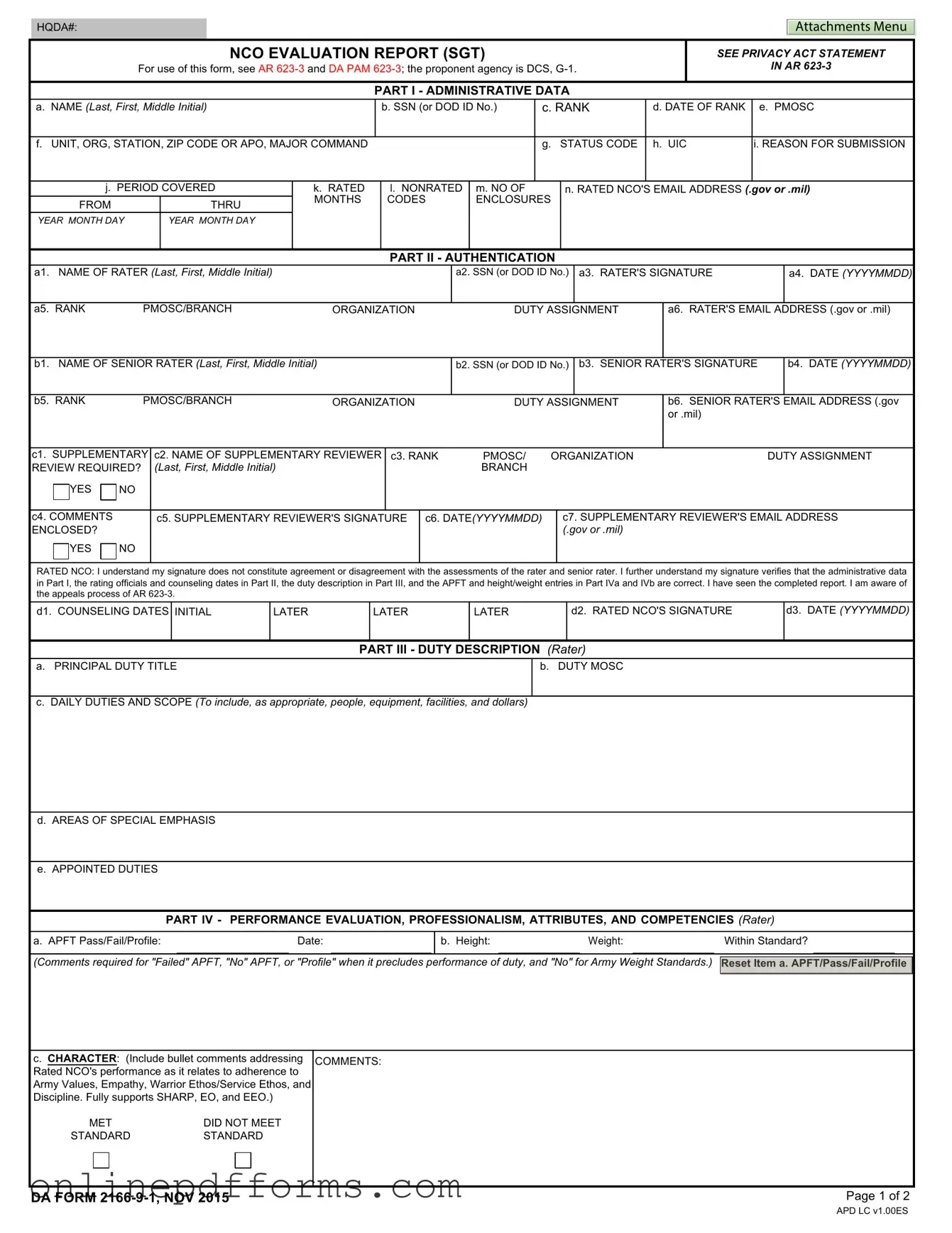The DA Form 2166-9-2 is an evaluation report for Non-Commissioned Officers (NCOs) in the Army. Like the DA 2166-9-1, it assesses performance and potential. It includes sections for administrative data, authentication, duty description, and performance evaluations. The format is similar, with a focus on the NCO's duties and competencies. Both forms require signatures from the rater and senior rater, ensuring accountability in the evaluation process.
The DA Form 67-9 serves as an officer evaluation report. This document shares similarities with the DA 2166-9-1 in that it evaluates the performance of officers. It also includes sections for administrative data, evaluations, and authentication. Both forms aim to provide a comprehensive assessment of an individual’s abilities and contributions within their role in the Army.
The DA Form 4856 is a development counseling form. It is similar to the DA 2166-9-1 in that it facilitates communication about performance and development. However, the focus of the DA 4856 is on counseling sessions rather than formal evaluations. Both forms emphasize the importance of feedback and growth within the Army structure.
The DA Form 1059 is an academic evaluation report used for Army training courses. Like the DA 2166-9-1, it assesses an individual's performance, but it is specific to training environments. It includes sections for administrative data and performance evaluations, highlighting the individual's achievements during training, similar to how the DA 2166-9-1 evaluates NCOs in their duty assignments.
The DA Form 2166-9-3 is another evaluation report for NCOs, specifically for those in a different grade. It mirrors the structure of the DA 2166-9-1, focusing on performance and potential. Both forms are used to document evaluations and require input from the rater and senior rater, ensuring consistency in how NCOs are assessed across different ranks.
The DA Form 7425 is a performance evaluation for enlisted personnel. Similar to the DA 2166-9-1, it is used to document performance and provides a framework for evaluation. Both forms require detailed descriptions of duties and competencies, allowing for a thorough assessment of an individual’s contributions to their unit.
Understanding the nuances of a New York Non-compete Agreement form is essential for businesses looking to protect their interests while maintaining compliance with employment laws. This form serves as a pivotal tool in ensuring that former employees do not unfairly leverage insider knowledge against their previous employer.
The DA Form 7500 is a report for Army civilians. While it is designed for a different audience, it shares the same goal of assessing performance. The structure includes sections for administrative data and evaluations, similar to the DA 2166-9-1. Both forms aim to provide a clear picture of an individual's performance and potential within their respective roles.
The DA Form 7223 is used for Army Reserve evaluations. It is similar to the DA 2166-9-1 in that it provides a formal assessment of an individual's performance. Both forms include sections for administrative data and evaluations, emphasizing the importance of performance feedback within the Army Reserve structure, just as it does for active-duty personnel.
